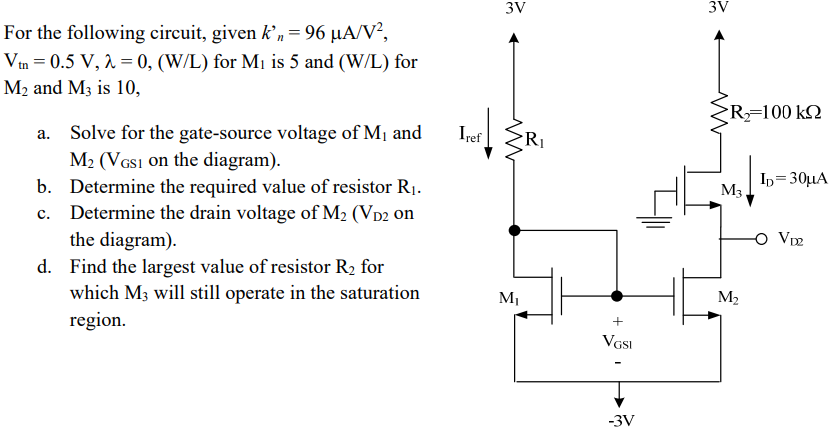For the following circuit, given k′n = 96 μA/V2, Vtn = 0.5 V, λ = 0, (W/L) for M1 is 5 and (W/L) for M2 and M3 is 10 , a. Solve for the gate-source voltage of M1 and M2 ( VGS1 on the diagram). b. Determine the required value of resistor R1. c. Determine the drain voltage of M2(VD2 on the diagram). d. Find the largest value of resistor R2 for which M3 will still operate in the saturation region.
